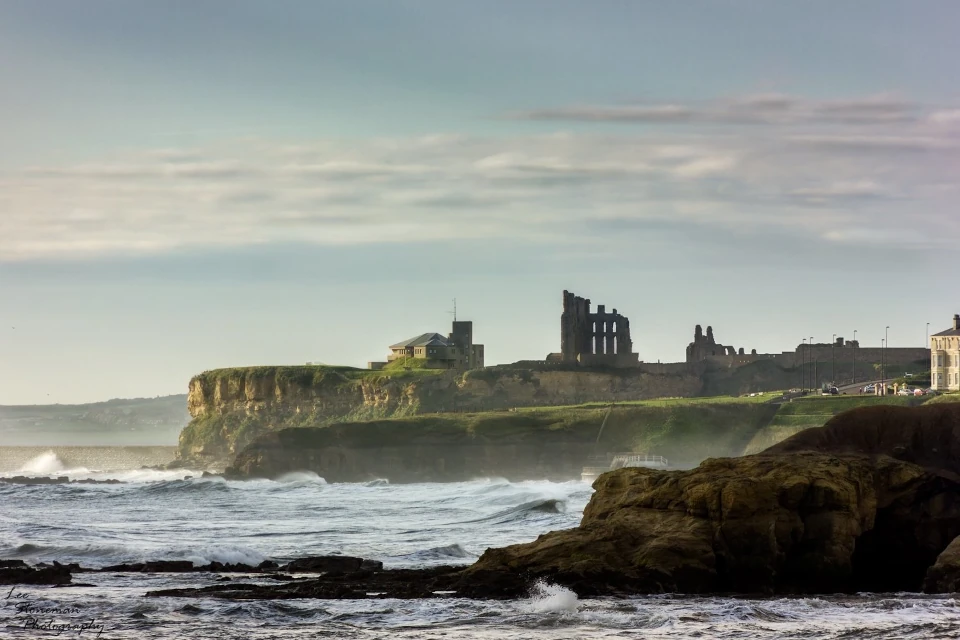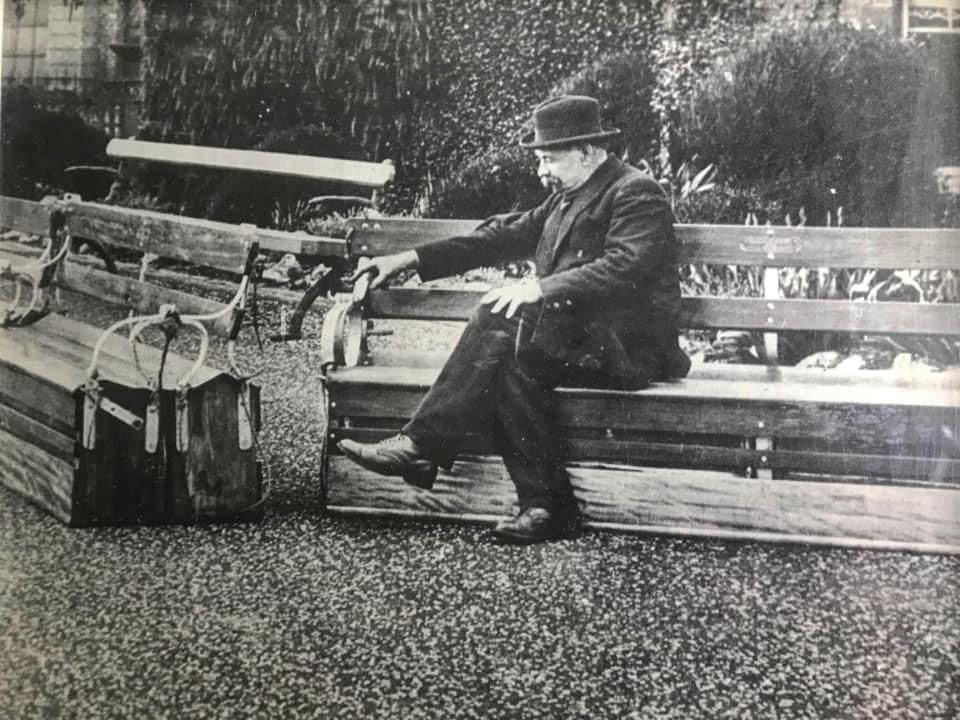
Model Boats
By Dalton Linkleter (b. 1928)
My world of model boats has always rotated round the sailing type. I don’t think I ever had an official production sailing yacht that was guaranteed to perform.
The first sailing boat I remember us taking to the Tynemouth Park was what was supposed to be a model of ‘Wee Two’ a double hulled thing that grandfather had made, having seen photo’s of ‘Wee Two’, this hull certainly wasn’t a replica type model. I don’t think it ever had a name, and looking back I cannot remember exactly how big it was. Childhood memory says it was about 4 feet long, but I don’t remember us having transport to carry it in those days before cars, from Denwick Terrace to the Park on the Sea Front, so it was probably only 2′ 6″, with father able to carry it under his arm.
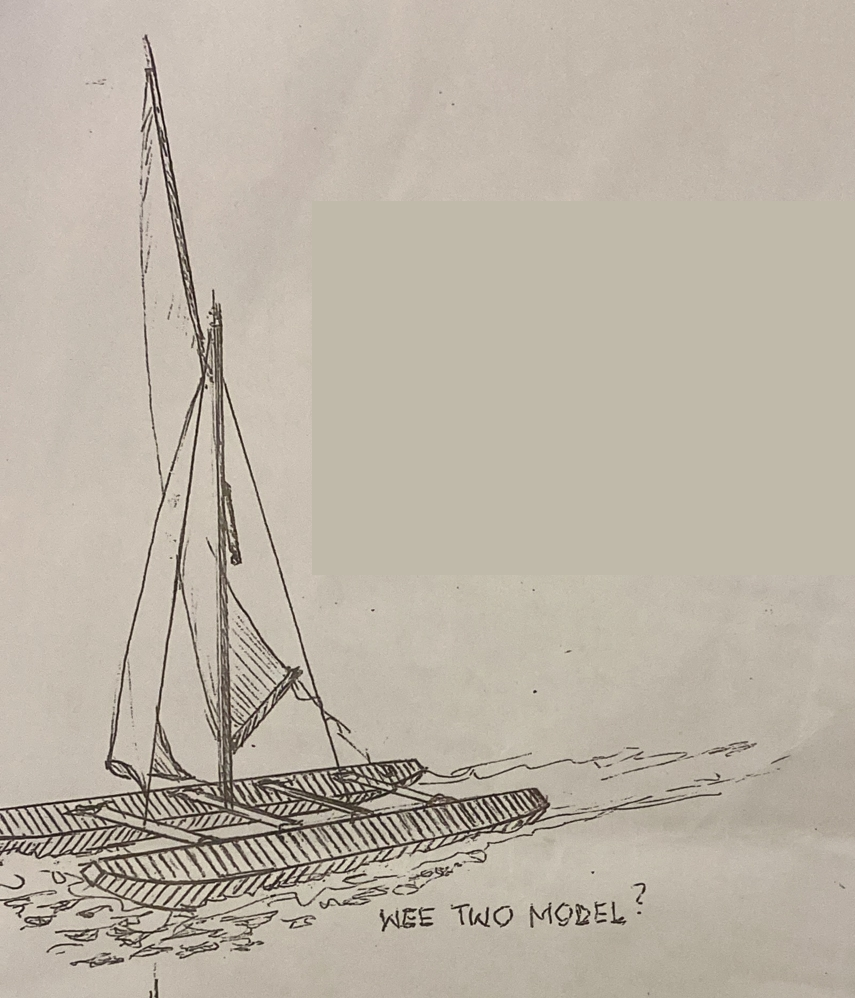
The hull was catamaran form two hulls made on edge diamond pattern, tapering at the ends with a definite rise towards the top corner both front and back. She was made of something rigid but had both hulls wrapped with something like cotton insulating tape overlapped in a regular pattern from stern to bow, then painted with dark green paint – probably the leftovers from the back door of No 9.
I remember no keel, centre board or other lateral resistor and as far as I am aware she had just an interlinking framework of bars. Father produced a reasonable suit of sails, I imagine balanced lug rig, the family favourite, because his mind didn’t move in the new fangled Bermudan areas, and the usual high cocked jib that most models fitted.
Performance – I remember cold days at the Park and as she seemed to cross from one side to the other and back again fairly rapidly without much fuss I assume it would be a north wind because of the cold and the lack of sail adjustment.
The panic day came and probably her last voyage, when she capsized in mid ocean, with complete reversal and the voicing of major concern by certain crew members. The rescue was in the form of a fellow boatman, from the model club, in a pair of thigh boots, who just walked out and collected her. Two things were impressed on my mind, the top 6″ of the mast and sail were muddy and the water barely came past the waders knees, a come down for the mighty ocean.
The mast and sails were then transferred to another ‘botch up’. This time the hull was a sheet metal version of what was supposed to be ‘Breakaway’. ‘Breakaway’ was a passenger carrying version of the type of speed boat that Linkies were making and racing between the wars, powered by a big outboard motor. She struggled back onto the water in a very patched up condition after the war and I’m certain whoever made the tin model didn’t take the dimensions from the real thing. Memory says that the beam of the model and the height of the hull were wrong for the length. Now the length again is dubious so I conclude that the eight year old mind stretched it out again and in reality it was something that father could carry under his arm down to the park, so we reduce it from the 4 or 5 feet of imagination to about 2′ 6″ again.
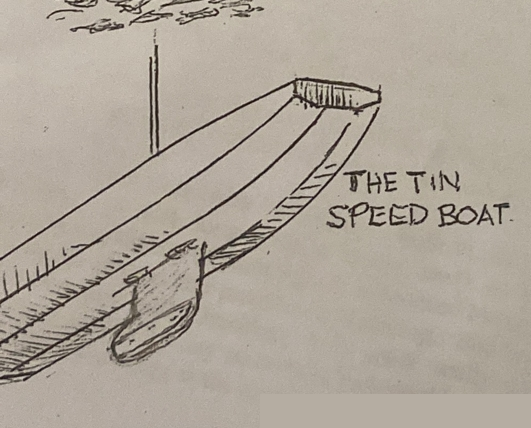
They were a parallel section hull with bevelled corners, square stern and tapering to the stem with a flat front transom. The foredeck stopped at an open rear cockpit about half the length. Father decked the cockpit with thin plywood and fitted a tin plate, lead weighted keel. To a small boy she was a bit of a disappointment because though ‘street cred’ was not known of in those days, there was a certain amount of ‘cudos’ to be gained by having an admired article, and this vessel looked very odd. So when it was explained that it was a speedboat model with green sails, how can a small boy say we cannot afford an engine, in an era when ex-shipyard fitter and factory worker grandfathers, were making little steam engines in their back kitchens. She performed no worse than the average biggish sailing model, was equally random, as far as adjustments to the sails were concerned and too big and heavy for an 8 year old wimp to cope with. I do remember that she never lost the mud stained top to her rig.
We moved then to twins, one for Joy and one for me. Grandfather had produced in the past a patent securing/release devise for the falls of a lifeboat. This needs explaining, lifeboats in those days were lowered from radial davits by means of blocks and tackle, loaded with rescuees. The prevailing connection to the lifeboat of the falls was by means of a ring on the lower block which went onto a shepherds cruke shaped hook at the bow and stern of the boat, designed so the block couldn’t accidently disengage itself at an inopportune moment. However this could provide a problem once the boat was in the turbulent water alongside the stricken ship, when as frequently happened one hook was freed and the other became jambed. The violent movement of the vessels in relation to one another could end up with the lifeboat capsized or dragged under. Grandfathers patent was a sort of trip hook held untripped by a little pawl linked to the other end hook by a rope lying along the centreline of the lifeboat and released by a sharp upward jerk of the rope, when both falls were released simultaneously, no matter what the boats position. This clever bit of ‘kit’ had been demonstrated by two hand carved teak lifeboat models about 15″ long. Added to this Grandfather had a complete antipathy to the then clinker built M.O.T. £1.00 per foot lifeboats, so his models were little gems of boat design.
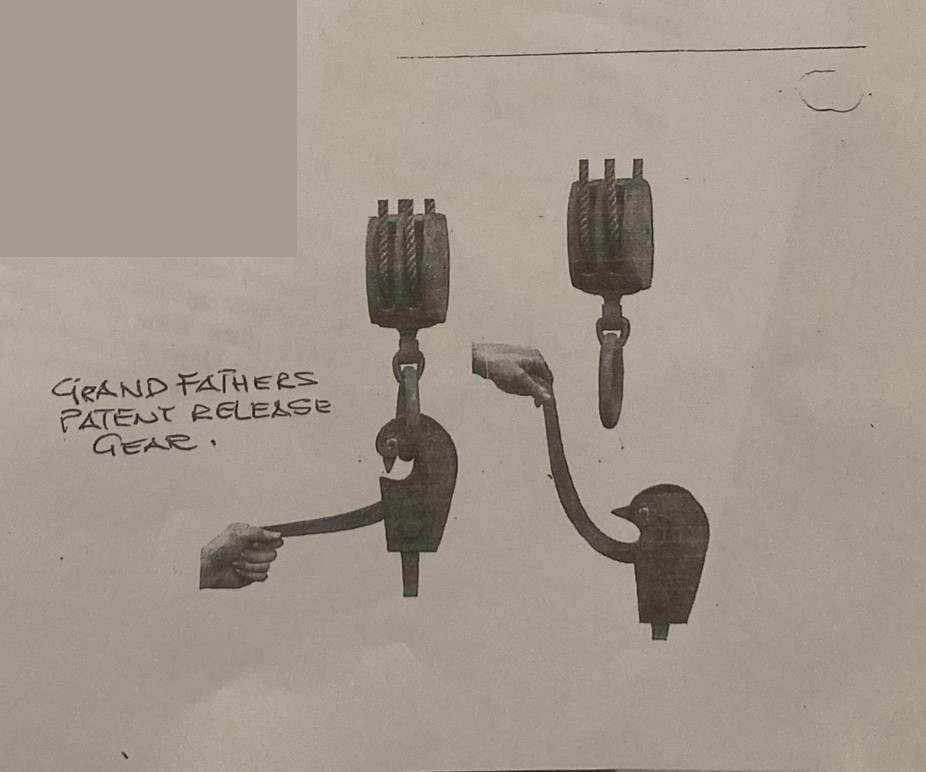
Mine was a standard shape with transom stern and jaunty shear, Joys rather similar had a canoe stern. Both had originally been solid models to give weight to the demo rig, but father hollowed them out and decked them with thin birch plywood on which he drew the deck margin and the planks. The light decks with the dark teak hulls when varnished made really beautiful little models. Mother got hold of some cotton stuff pink for Joy and green for me, it was woven with a lined pattern that when made up into the sails looked like the stripes of the sails clothes. Balanced lug sails with a small jib made the rig fold within the length of the boat for carrying.
Both boats sailed exactly as all small models did, ‘griping’ up into the wind in each squall until they ‘luffed’, then paying off, sailing along a bit in the lull, then going through the same performance again. I remember jinking backwards and forwards on the shore waiting for the thing to come to land and it changing directions every few yards as it neared the shore.
Once we graduated to real sailing the model world became redundant, until our own children were interested. I tried a ‘paper mache’ hull built round a wood former using a waterproof glue, but never completed it, I can understand why the rigs of past models always changed from model to model, because masts and sails were such a labour when the exciting bit was finished. That hull was beautifully strong and light.
Then a Thames Barge cut from a solid block of polystyrene and over coated again with waterproof paper mache, was very successful making a light hull which needed loads of keel weight to float it at a suitable level, this with its square section made a very wind worthy model, but by then we lived far from the park and it to vanished into the mists of time.
Later I saw radio controlled racing yachts which were sort of dry feet sailing and on a small lake were as exciting almost as real sailing. It was about the same time as we produced the first ‘towing boats’.
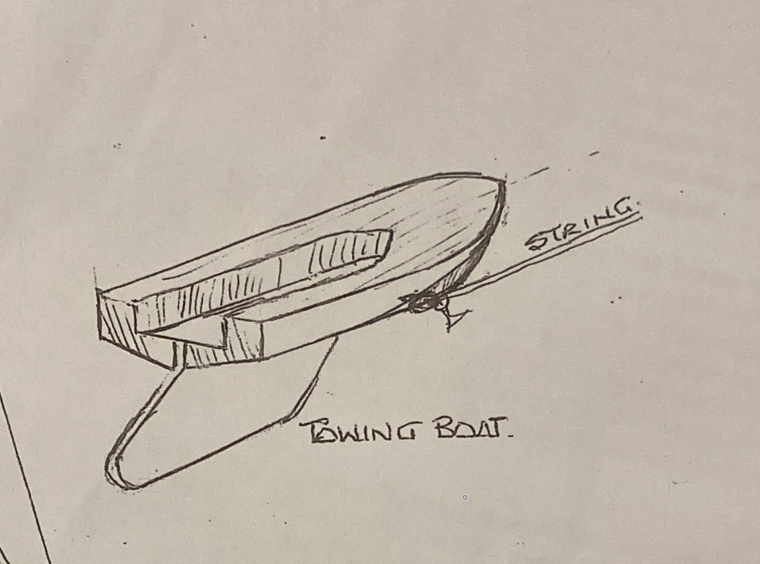
In a visit to the Park Lake, John had taken an old wooden cut out hull with a string tied to a ring in the nose, with which he ran round the pond greatly exasperated, because after dropping the boat in the water, forward motion promptly aligned it with his direction of running, so that it just bounced along on the path behind him. This brought to mind a story father had told us of rescuing a capsized dinghy at the pier end sometime when they were youths. They had persuaded the rescuees to tie the tow line to the boats shroud and lower the centre board, this produced a sort of kite effect, in which the forward motion through the water, putting pressure on the shore side of the centreboard, making the boat ‘ratch’ off away from the pier, so that by walking along the lower pier they could tow the waterlogged craft right into the haven, without worrying about rock ends or the four poles.
Fathers other story was of a similar nature, in that Grandfather had built a rescue craft in the form of a sealed hull with a centreboard and a crafty rail along the side, to which a tow line was connected. The effect of towing this vessel was the same, the idea being, that towed by a horse, along the pier or the beach, this machine would carry a rescue line to a stricken ship either ashore behind the pier or aground on the Long Sands. This bit of gear was never used in anger, but father said as boys, they lugged it down to the pier and spent happy times running along the pier towing this thing in the rough water under the Castle Point. This all must have been before the first war, because the rescue craft was reinvented by the Admiralty as a paravane for sweeping mines, during that conflict.
The progression from these memories was a light solid wood hull of a power boat shape with a large plywood centre board in the hull, towards the aft end, a screw eye was put in the chine about a third of the length from the bow, to which the tow line was attached. The first try was most impressive, the boat rose up on its bow wave at the first stride and immediately took up a position a yard or so off the shore, where it stayed as the small youth ran along the footpath a safe distance from the waters edge. Later a pair of these hulls travelled miles round Killingworth Lake towed by John and his friend. A most successful model.
Read ‘4th July 1948 — A Line Squall’


